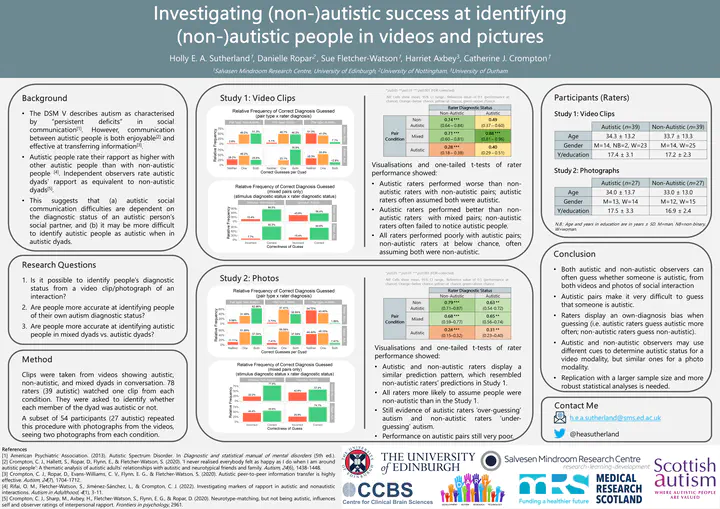Investigating (non-)autistic success at identifying (non-)autistic people in videos and pictures

Abstract
“Social and communication impairments” are part of the diagnostic criteria for autism, but recent research has shown that social interaction and communication between autistic people are both enjoyable and efficient at transferring information. This suggests that autistic social/communicative “impairments” are dependent on the neurotype of the other member(s) of the interaction. This may make it more difficult for observers to accurately identify someone as autistic when they are interacting with another autistic person. To test this hypothesis, 78 raters (39 autistic; 39 non-autistic) watched clips from videos showing autistic dyads, non-autistic dyads, and mixed dyads conversing, and were asked to identify whether each member of the dyad was autistic. A subset of 54 participants repeated this procedure with photographs of dyads in conversation. Raters correctly identified the neurotype of dyad members at a rate better than chance for videos (0.58, p<0.001) and photographs (0.55, p<0.001). However, accurate identification for autistic dyads was significantly below chance for both videos (0.34, p<0.001) and photographs (0.27, p<0.001). For videos, ratings of mixed dyads had the highest accuracy (non-autistic raters 0.71 p<0.001; autistic raters 0.88 p<0.001); for photographs, non-autistic dyads had the highest accuracy rate overall. For videos, both autistic and non-autistic raters showed an own-neurotype accuracy effect across all dyad types (autistic raters outperformed non-autistic raters for autistic and mixed pairs; the opposite for non-autistic pairs).